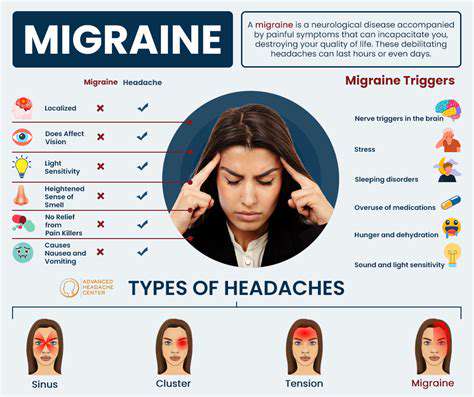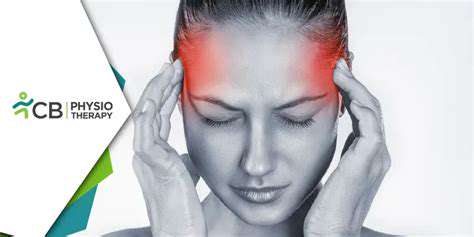Keeping a Headache Diary: Your Key to Identifying Triggers

What to Include in Your Headache Diary
Understanding the Importance of a Headache Diary
Keeping a headache diary is a crucial tool for anyone experiencing recurring or persistent headaches. It allows you to meticulously track the details of your headaches, enabling a more profound understanding of their triggers, patterns, and characteristics. This detailed record provides invaluable information to healthcare professionals, assisting them in diagnosing the underlying cause and developing an effective treatment plan. This proactive approach empowers you to take control of your headache management.
By carefully documenting each headache episode, you can identify recurring patterns, potential triggers, and the effectiveness of different pain relief strategies. This organized approach allows for a more accurate and comprehensive picture of your headache experience, leading to more informed decisions about your health and well-being.
Recording the Headache's Characteristics
Accurate documentation of headache characteristics is paramount. Details such as the location of the pain (e.g., one side of the head, both sides, forehead, temples, behind the eyes), the type of pain (e.g., throbbing, stabbing, pressure), and its intensity (using a pain scale) should be meticulously recorded. Describing the headache's duration, frequency, and any accompanying symptoms (e.g., nausea, vomiting, sensitivity to light or sound) is also vital.
Noting Potential Triggers
Identifying potential triggers is often a key step in managing headaches effectively. Carefully note everything you do before, during, and after a headache episode, including your diet, stress levels, sleep patterns, environmental factors (like weather changes or specific smells), and any medications or supplements you take. This detailed record can help you pinpoint triggers that might be contributing to your headaches.
Documenting Precipitating Factors
Beyond triggers, it's important to document any events or situations that might have preceded or coincided with a headache. This could include specific activities, emotional states (like stress or anxiety), changes in your routine, or even recent exposure to certain substances or environments. These seemingly minor details can often reveal valuable insights into the underlying causes of your headaches.
Tracking Pain Relief Measures
Recording the specific pain relief measures you employ, along with their effectiveness, is also a critical component of your headache diary. Note the type of medication (over-the-counter or prescription), the dosage, the time you took it, and how much relief it provided. This information helps you understand what works best for you and helps your doctor tailor your treatment plan accordingly.
Analyzing the Headache Diary Entries
Regularly reviewing your headache diary allows for patterns and trends to emerge. This analysis helps you identify potential triggers, understand the characteristics of your headaches, and track the effectiveness of different treatments. By recognizing patterns, you can proactively avoid triggers and manage your headaches more effectively.
Sharing Your Diary with Your Doctor
Finally, sharing your detailed headache diary with your doctor is crucial. It provides a comprehensive record of your headache experiences, enabling them to gain a deeper understanding of your condition. This shared information empowers your doctor to make well-informed decisions about your treatment and management plan, ultimately leading to a more effective and personalized approach to your headache care.
Identifying Headache Triggers

Stress and Anxiety
Stressful situations, whether personal or professional, can often lead to tension headaches. Prolonged periods of high stress can significantly impact your overall well-being, potentially triggering or exacerbating headaches. Managing stress through relaxation techniques, exercise, and adequate sleep can help prevent these types of headaches from occurring.
Anxiety disorders, characterized by persistent worry and fear, are also linked to headaches. The physiological response to anxiety, including muscle tension and hormonal changes, can contribute to headache pain. Seeking professional help for anxiety management can provide effective coping strategies to minimize headache triggers.
Diet and Dehydration
Certain foods and drinks can act as headache triggers for some individuals. Foods high in tyramine, such as aged cheeses and cured meats, can sometimes lead to headaches in susceptible people. Maintaining a balanced diet and paying attention to your body's response to specific foods can be crucial in identifying your triggers.
Dehydration is another significant factor. When your body is not adequately hydrated, it can lead to headaches. Drinking plenty of water throughout the day and avoiding excessive caffeine or alcohol can help prevent dehydration-related headaches.
Environmental Factors
Environmental factors such as strong smells, bright lights, and loud noises can be significant headache triggers for many people. Migraine sufferers, in particular, often report sensitivity to these factors. Identifying and avoiding these environmental triggers can significantly reduce the frequency and severity of headaches.
Sleep Disruptions
Inadequate sleep or inconsistent sleep patterns can disrupt the body's natural rhythms and contribute to headaches. A lack of sufficient sleep can lead to increased muscle tension and stress hormones, both of which can act as headache triggers. Establishing a consistent sleep schedule and creating a relaxing bedtime routine can help improve sleep quality and reduce the risk of headaches.
Changes in Weather Patterns
Variations in weather patterns, including barometric pressure changes, can also be headache triggers. The fluctuations in atmospheric pressure can affect blood vessels in the head, potentially leading to pain. Monitoring weather forecasts and taking precautions to adjust to these changes can help manage headache symptoms related to weather.
Medication Side Effects
Certain medications, while beneficial for other conditions, can unfortunately trigger headaches as a side effect. Over-the-counter pain relievers, certain prescription drugs, and even some medications for high blood pressure can sometimes lead to headaches. Consulting with a healthcare professional about potential side effects and exploring alternative options can be important in managing headaches related to medication.







